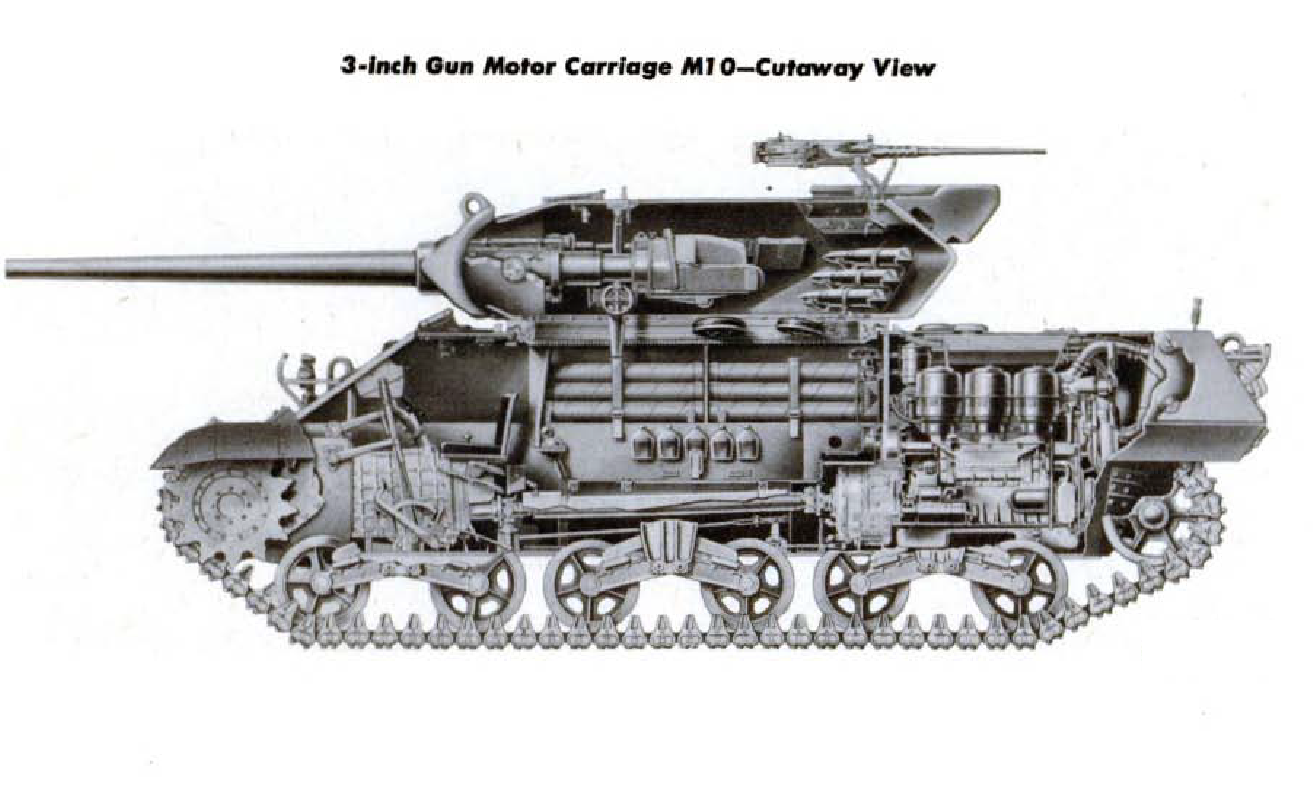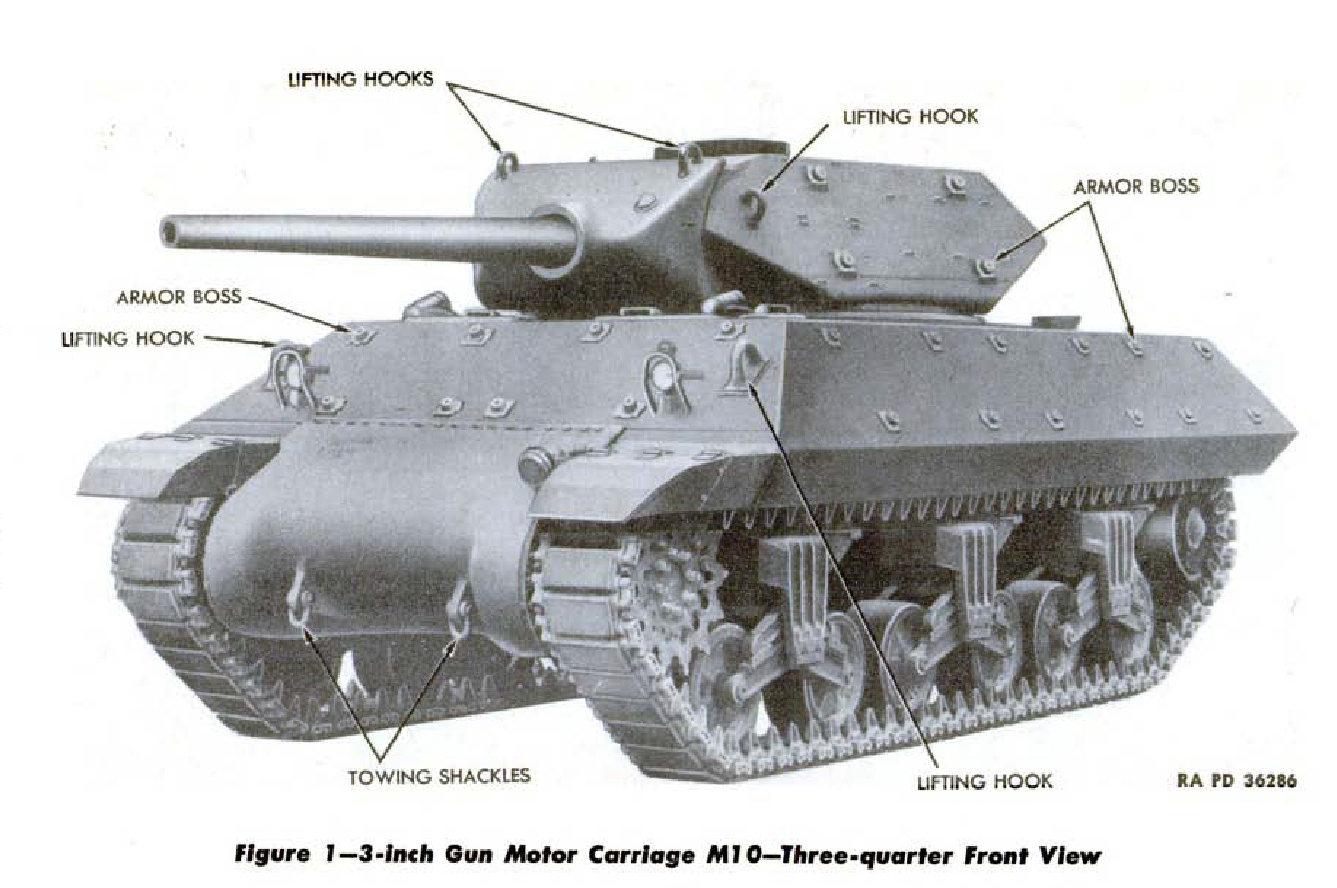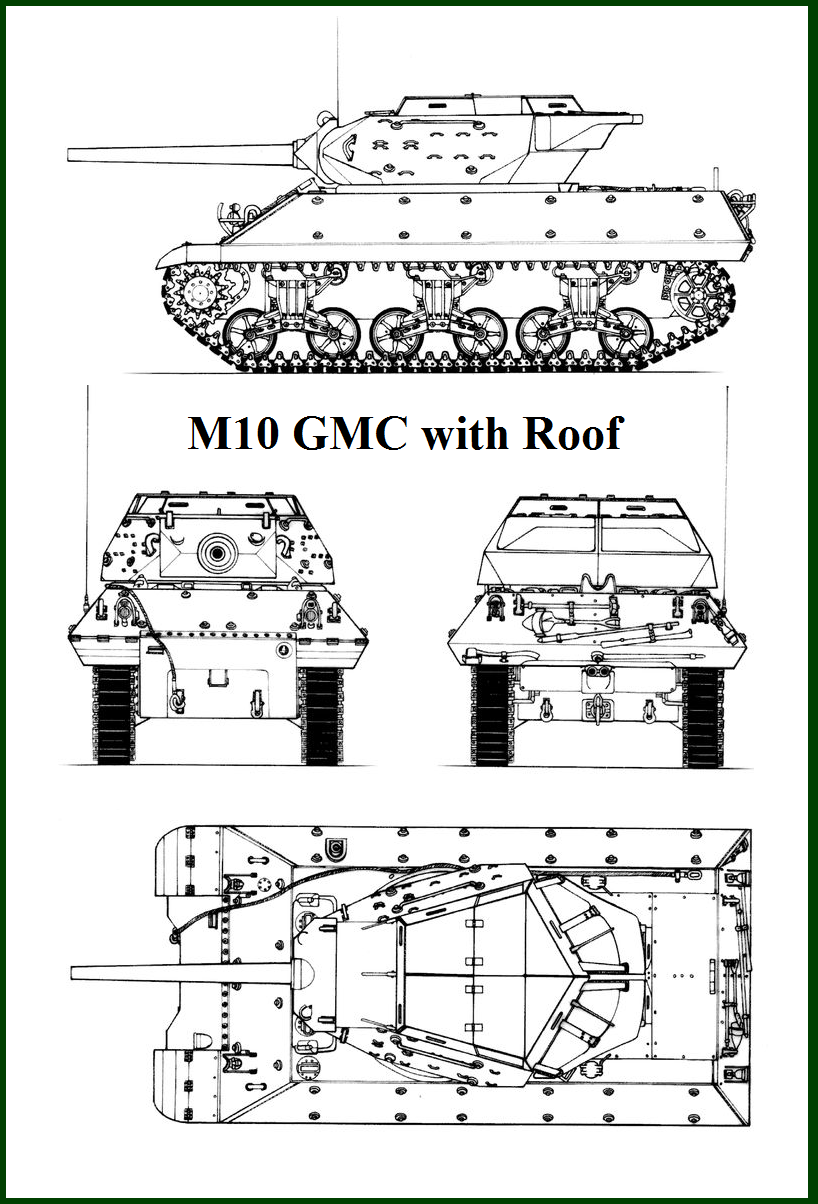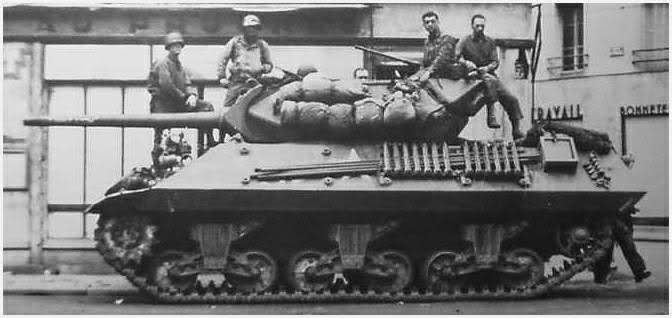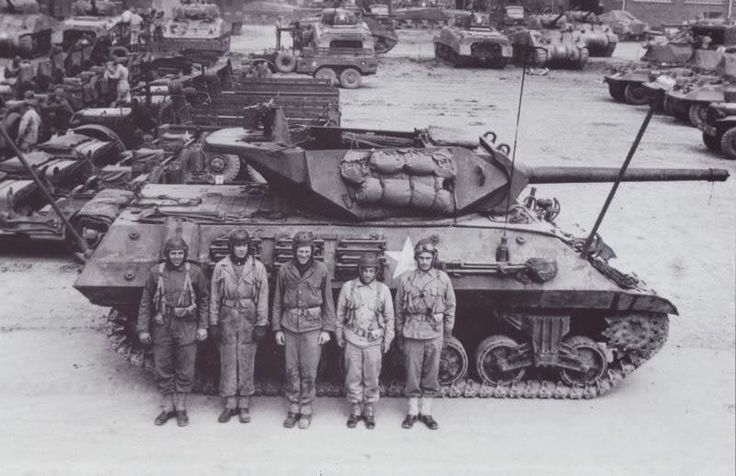
M10 GMC: Good, but not Great, It got the Job Done
The M10 was a tank destroyer mounting a 3-inch anti-tank gun and was known as the M10 3 inch Gun Motor Carriage during the war, or M10 GMC. It used the M4A2 chassis with the GM 6046 to power it, with a new lighter upper hull and turret. These tanks only had an M2 .50 caliber machine gun other than their main gun. The turret lacked power traverse. It had a five-man crew and was generally liked by its crew.
The American TD force was deemed a failure, but not because the men or vehicles performed badly, it was the doctrine that failed to pan out, the battalions themselves performed well overall. It was used until the end of the war, and many TD battalions preferred it over the faster M18. The TDs lacked a co-ax machine gun, this and their open top made them more vulnerable to infantry than a tank. Even so, these units were often given tank missions. The open top did offer a big advantage in finding any enemy tanks to shoot though. ⇓
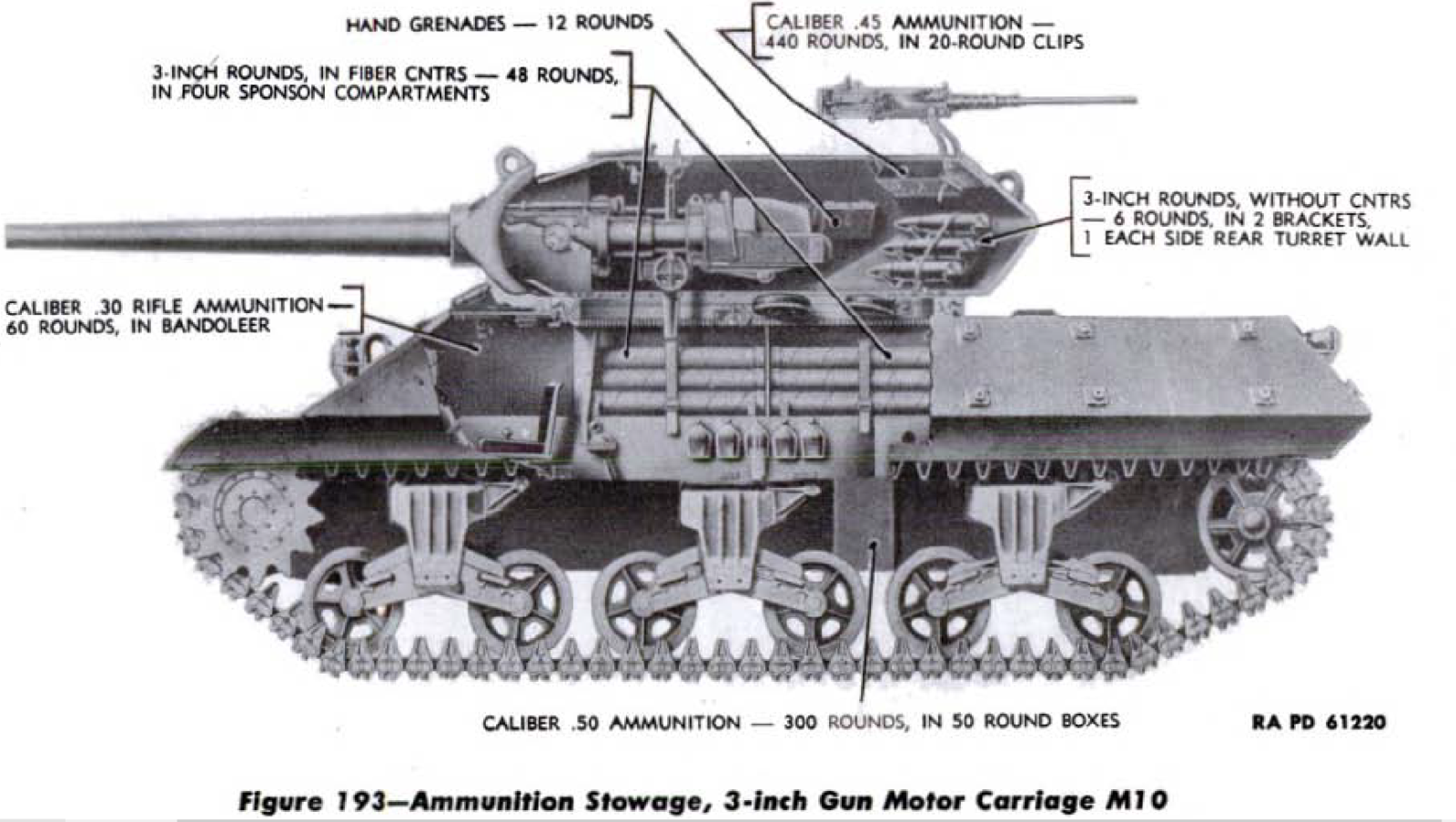
One aspect of the design that shows how rushed it was are the driver’s hatches. They were larger than the Shermans produced at the same time, but could not be opened or closed if the turret was forward. So the crew had to make a choice if the driver and co-driver were going to be able to see well or be buttoned, before the battle or movement. The M10 lacked a turret basket, so the driver and co-driver had an easier time getting out of the roofless turret. Like all American designs, it went through a series of upgrades through its service life. The turret was upgraded and balanced better, and the crews liked to add their own roofs. A power turret drive was never added to the tanks in US service though.
 The M10A1 version of this vehicle had a Ford GAA motor. There was no difference other than the changes needed to manage the Ford GAA instead of the GM 6046. Crews added on armored roofs to their turrets, often all hinged so they could open up to really see what was going on, in the field. It was not uncommon for TD units to be used as fixed artillery for several days.⇓
The M10A1 version of this vehicle had a Ford GAA motor. There was no difference other than the changes needed to manage the Ford GAA instead of the GM 6046. Crews added on armored roofs to their turrets, often all hinged so they could open up to really see what was going on, in the field. It was not uncommon for TD units to be used as fixed artillery for several days.⇓
The M10 Turret went through several changes, the first versions were badly out of balance, and they tried to solve this by mounting the grousers for the tracks on the back of the turret. This didn’t work well and wedge-shaped counterweights were added. This helped, but eventually, the final production M10 turrets were widened, and even bigger counterweights were added with a distinct duckbill look to them. They came up with a full roof armor kit for the final turret, and a half cover for the early turrets that could be field retrofitted.⇓
The M10 and M10A1 had all the gear aboard to be used at artillery, and they got used in this role on a regular basis. A few TD battalions spent almost as much time as artillery as they did in their TD role. This capability was used often in Italy because the 3 inch gun on the M10 didn’t tear up the vital roads as much as the larger guns did.
They built 4993 M10s and 1713 M10A1s. At first, only M10 TDs were authorized for service overseas, and the M10A1, even though found to be automotively superior, was to be used in stateside training only. There was some doubt about the usefulness of the motorized TD before the Normandy landings, and production of the M10 was halted as many TD units were converted back to towed gun units or disbanded.
The M10 saw action in North Africa, Sicily, Italy, and Northern Europe, and various Pacific Campaigns, the most notable being the retaking of the Philippines. It wasn’t really until the action started after the Allies went into Normandy that it really saw a lot of anti-armor use. In the MTO the TD units spent an awful lot of time being used as artillery units, to the point they had to learn how to swap barrels on their 3-inch guns after wearing the tubes out.
The M10 in northern Europe saw lots of action but was also being replaced by the M18 and M36. The M36 was very popular, the M18 was mixed, some units love it, some units refused to give up their trusty M10s. The M10 was not popular in the Pacific, the thinner armor, lack of hull and co-ax machine guns and open top made for a much easier target destroy for Japanese troops.⇓
If you are wondering what the little round pads all over the M10 are, they were for an armor add-on kit, that was never used for some reason. They gave the crews a handy place to hang other things though, like bags and camo nets…
♠ M10 GUN and Vehicle DATA ♠
Click on the below links to get PDF version of the spec sheets.
3 inch M7 gun GMC M10 Spec Sheet, M10 GMC 3inch spec sheet
♠ M10 GMC Gallery ♠

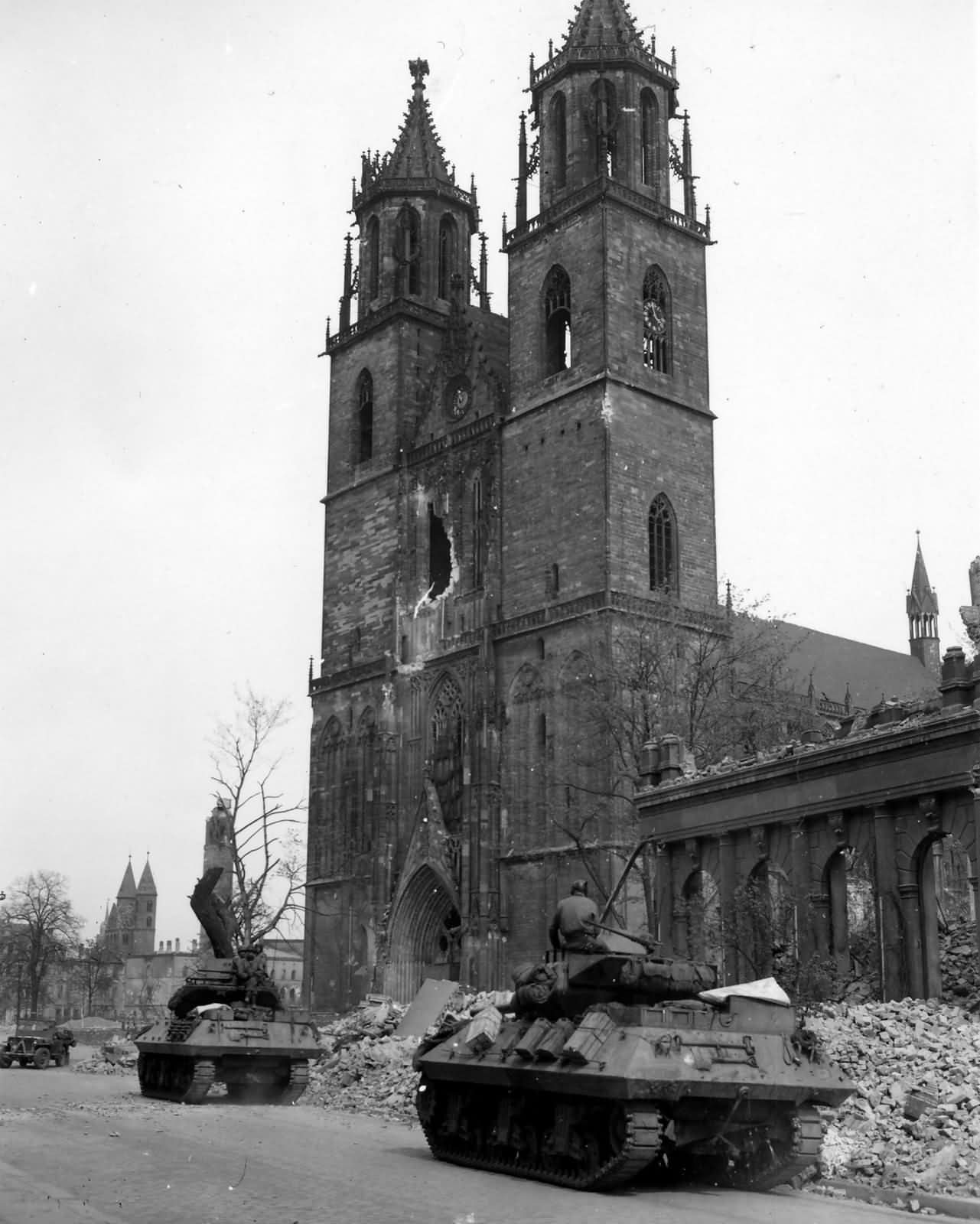

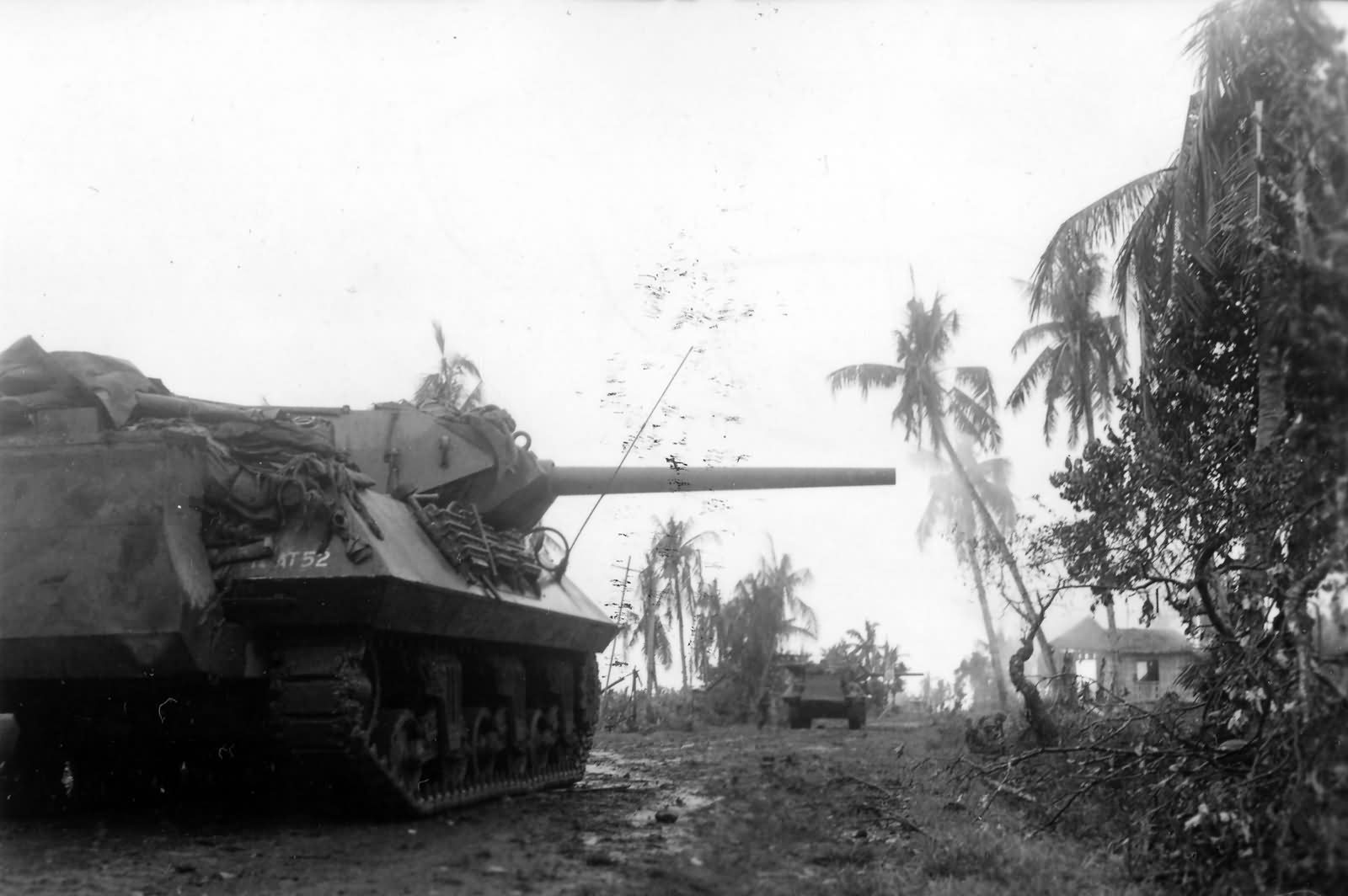
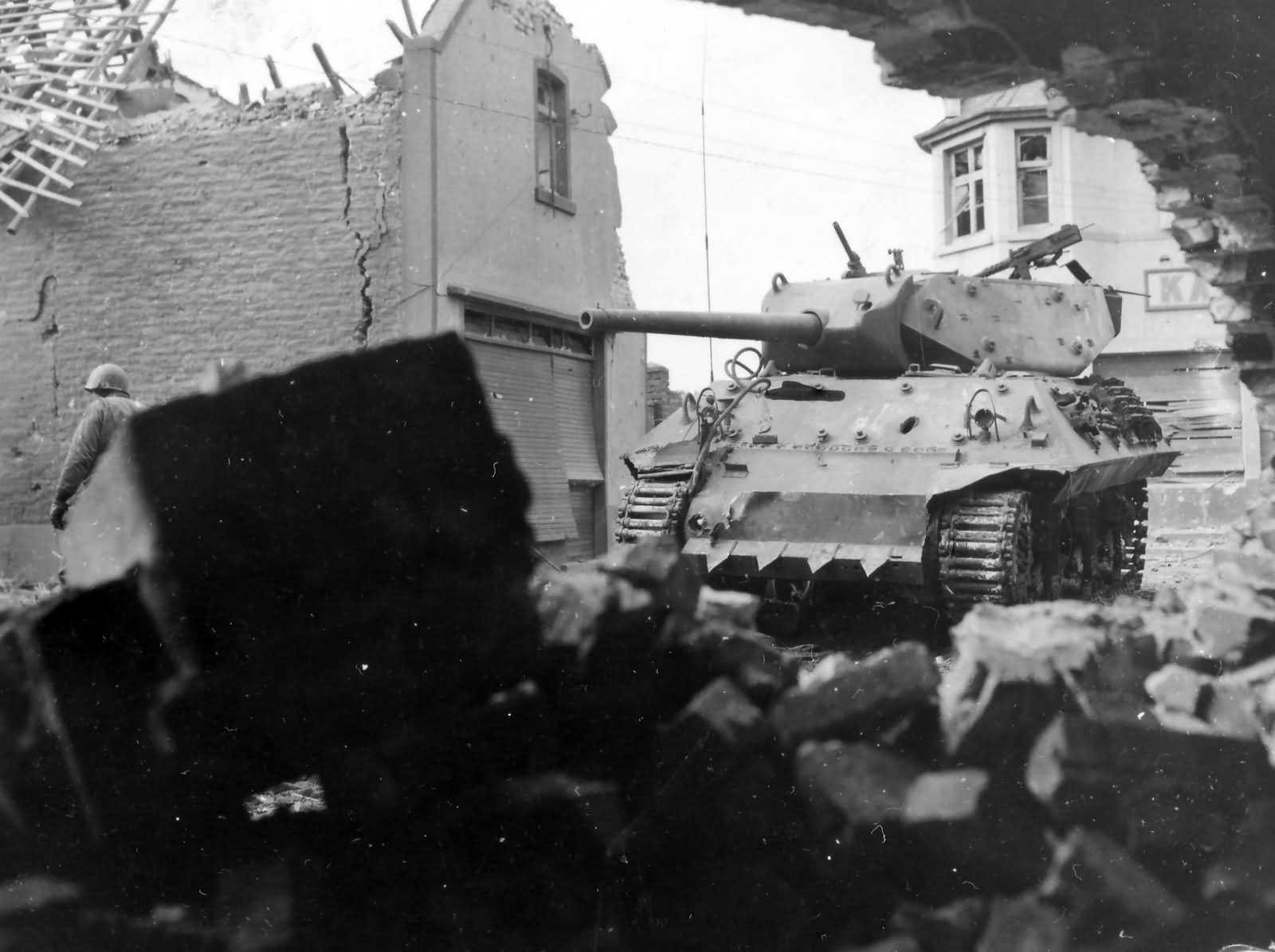


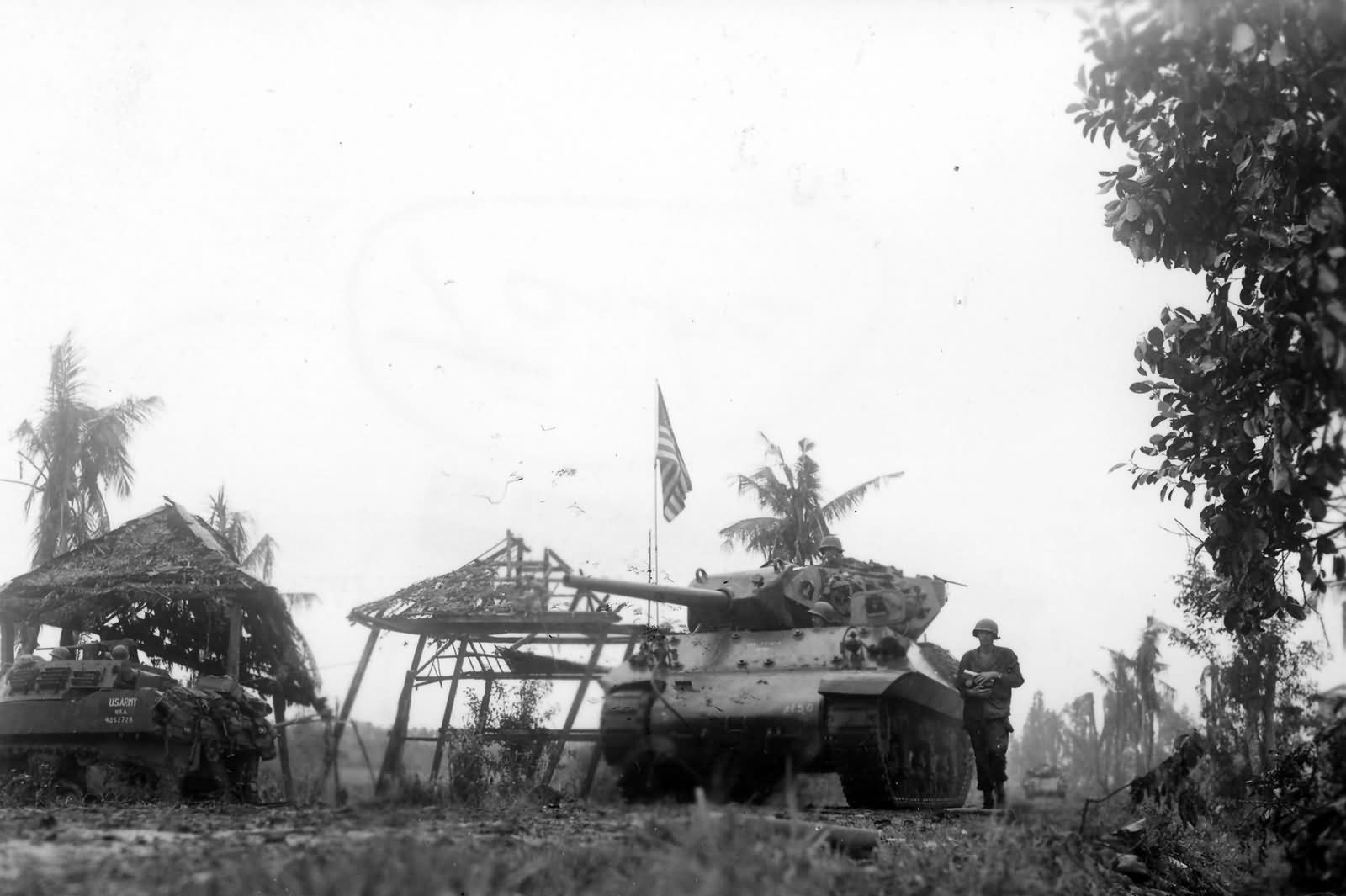


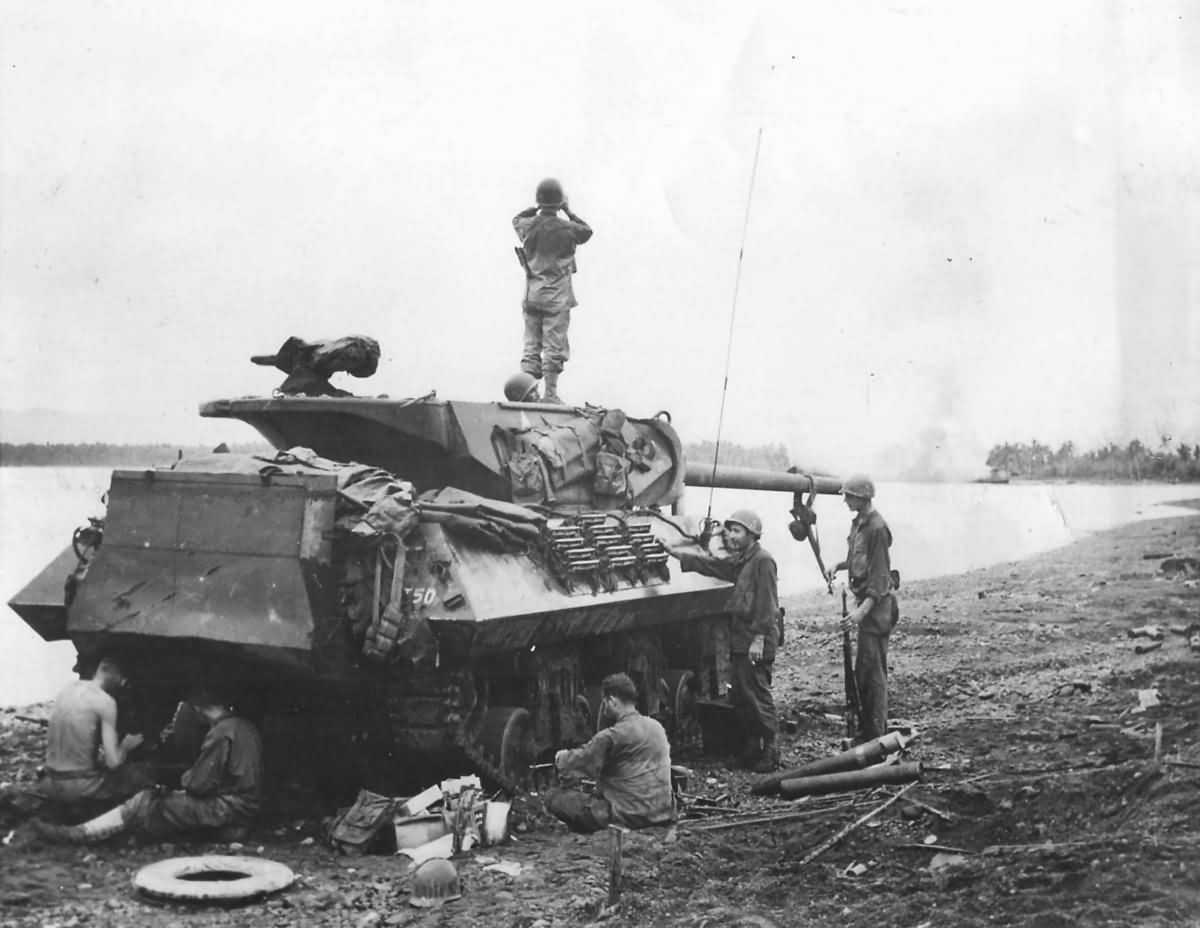


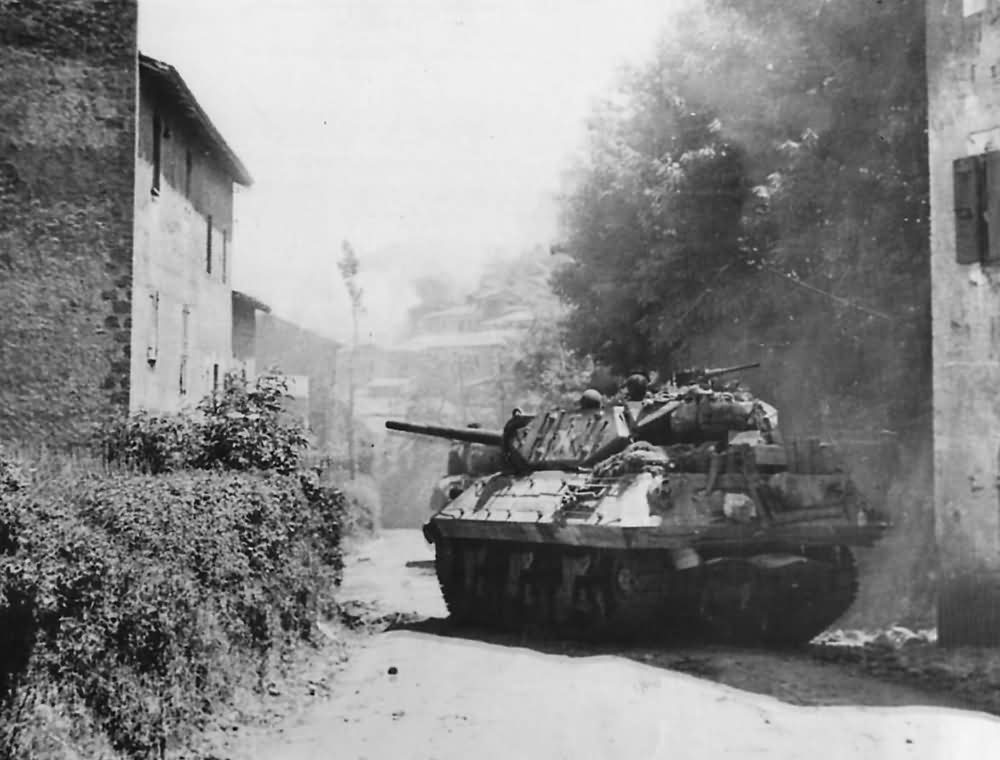
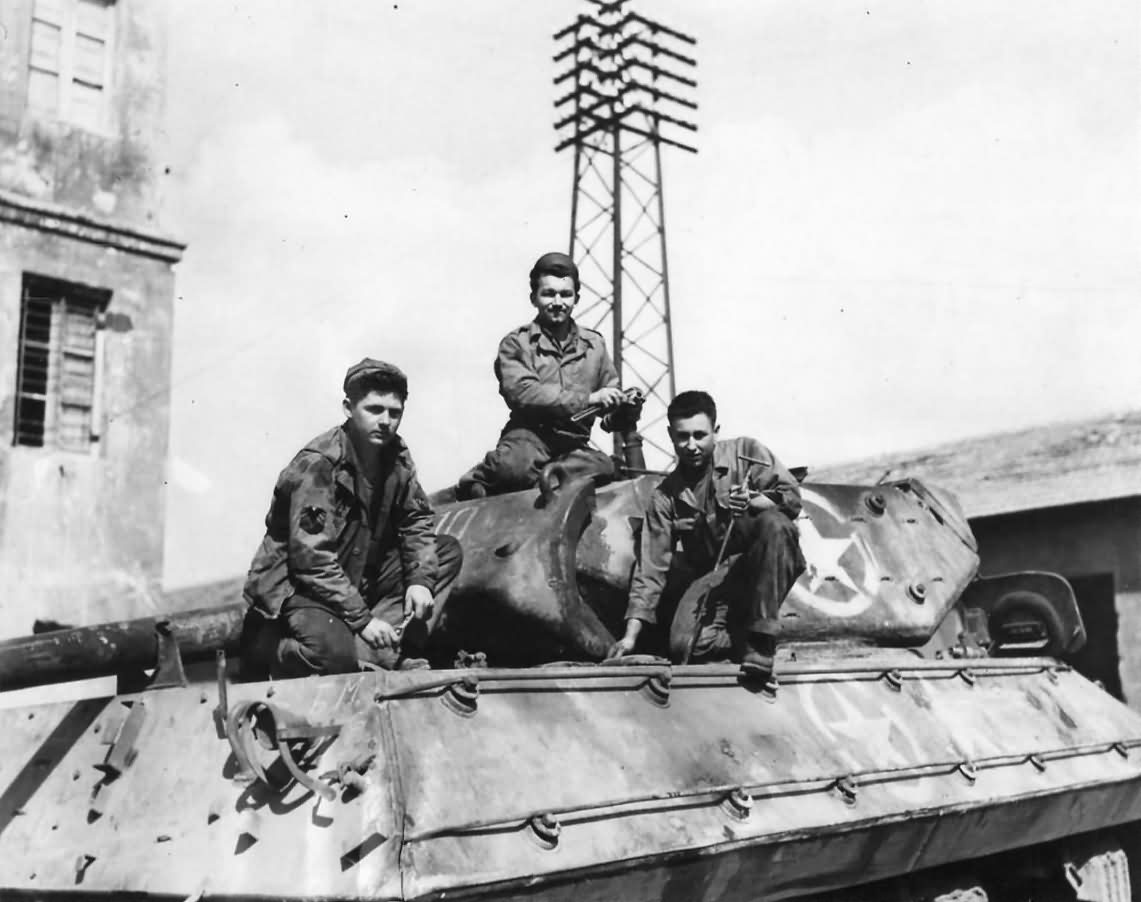


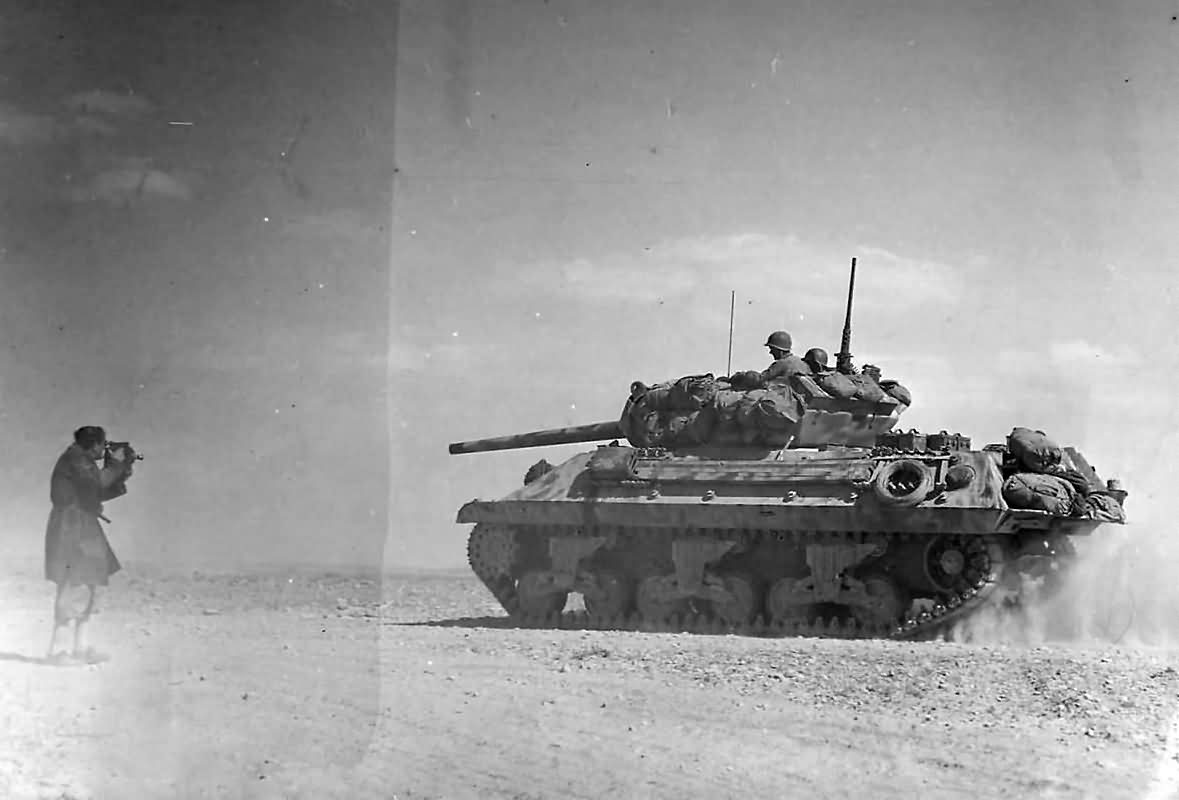
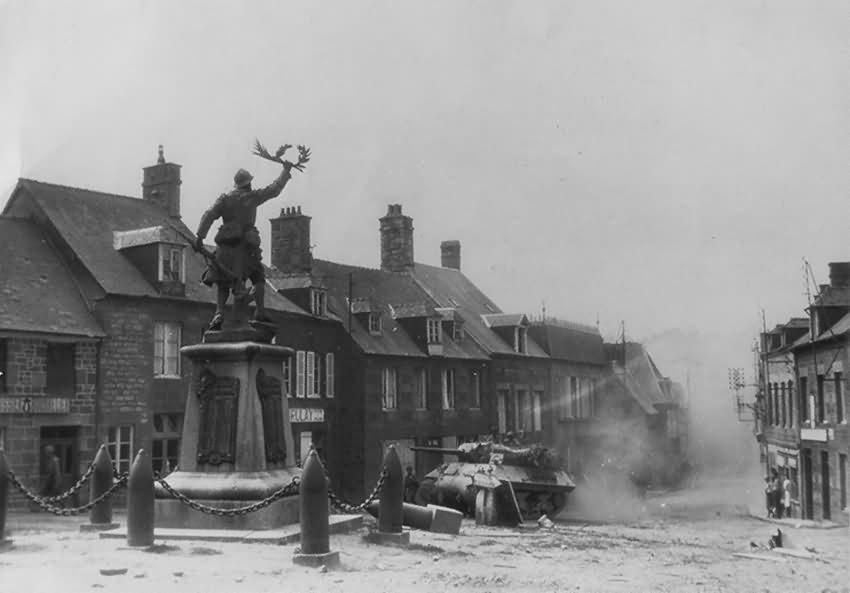

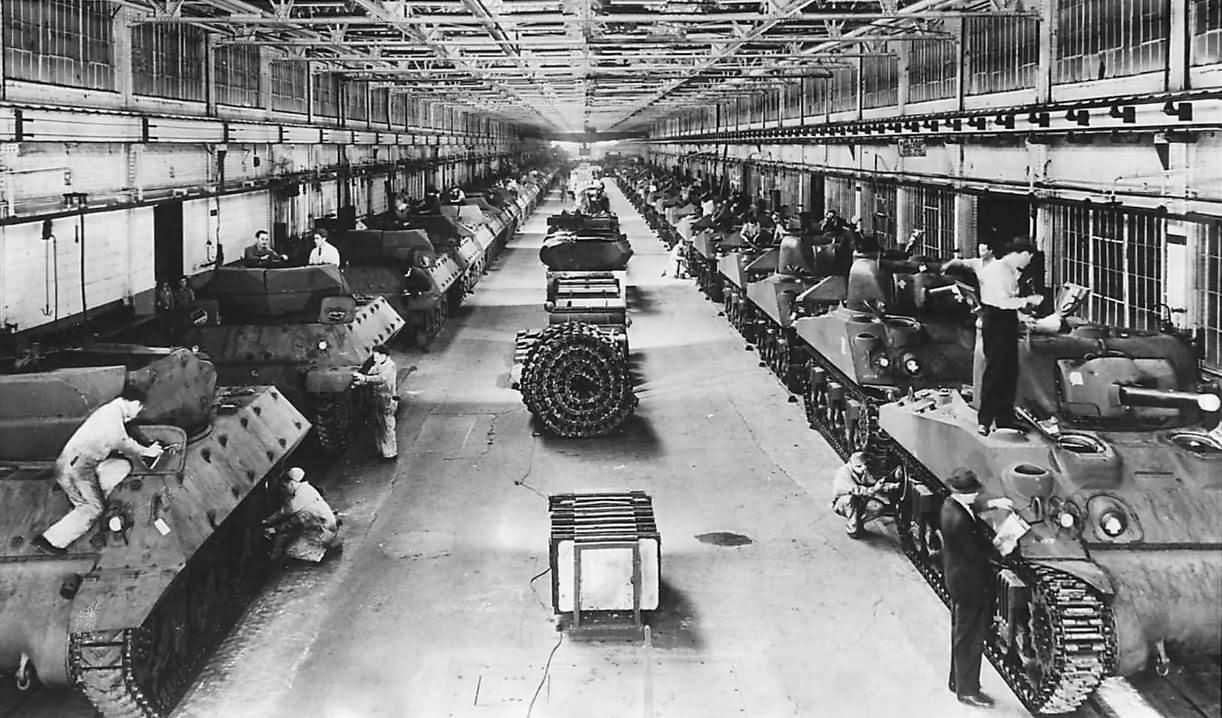

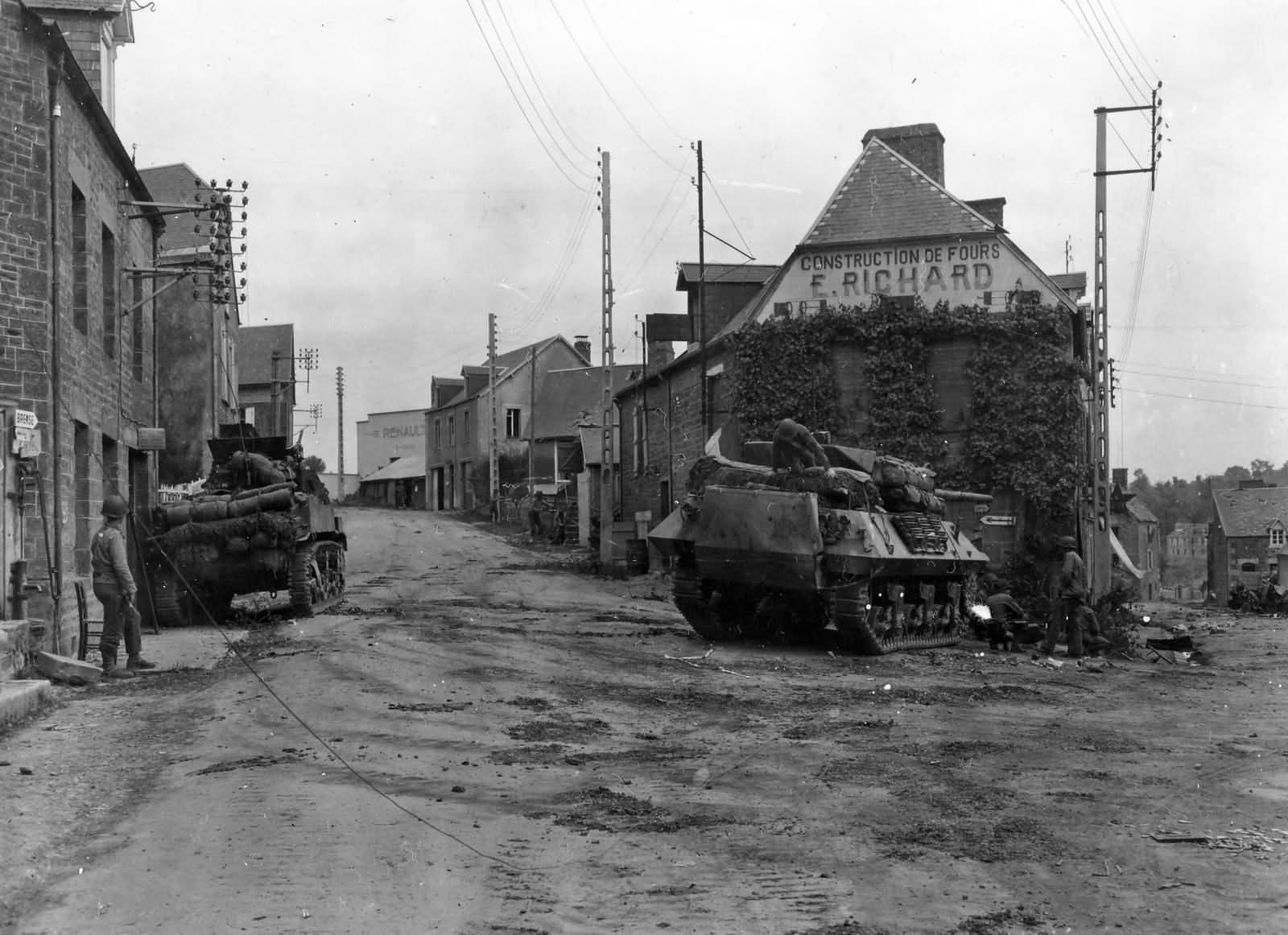
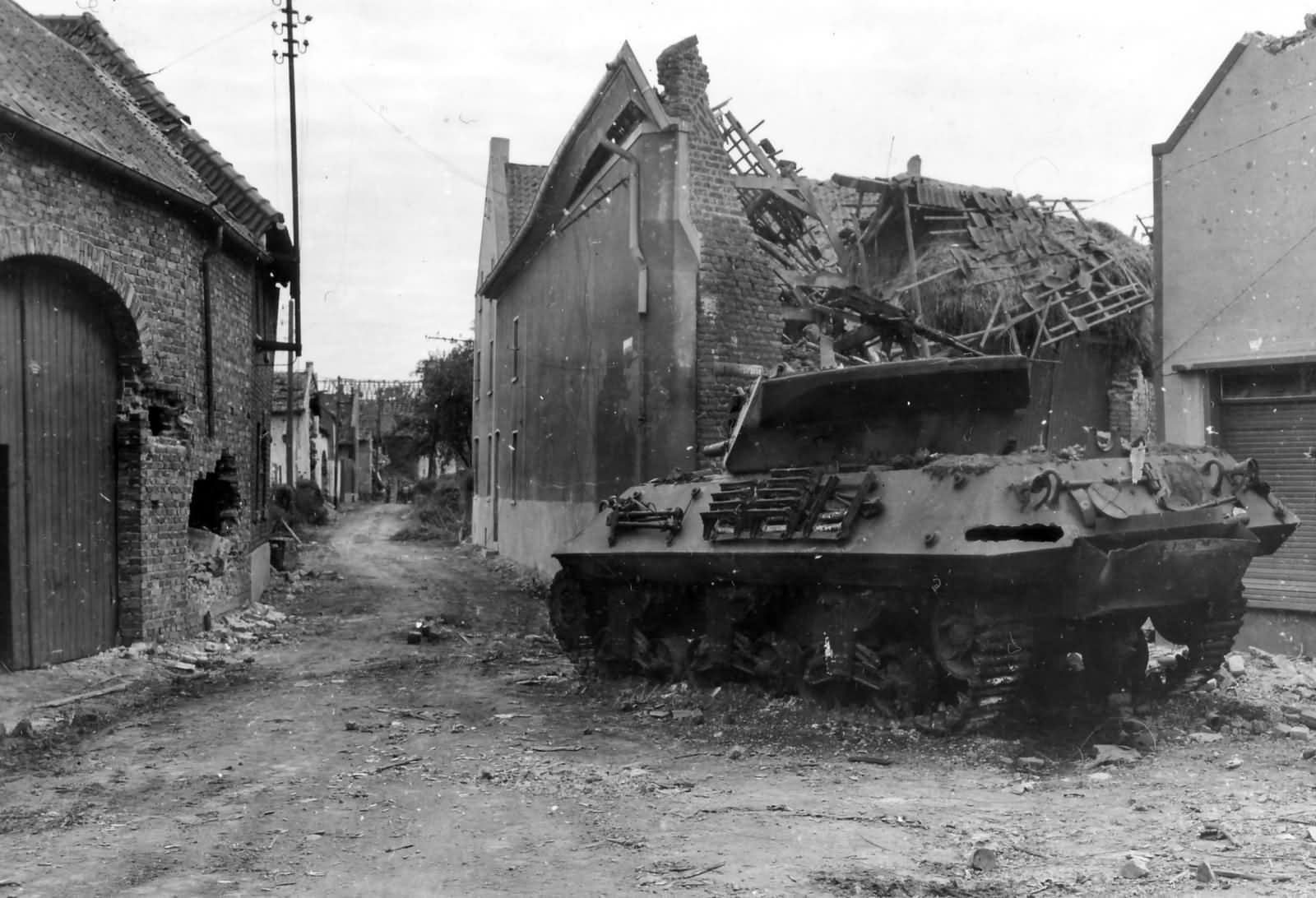
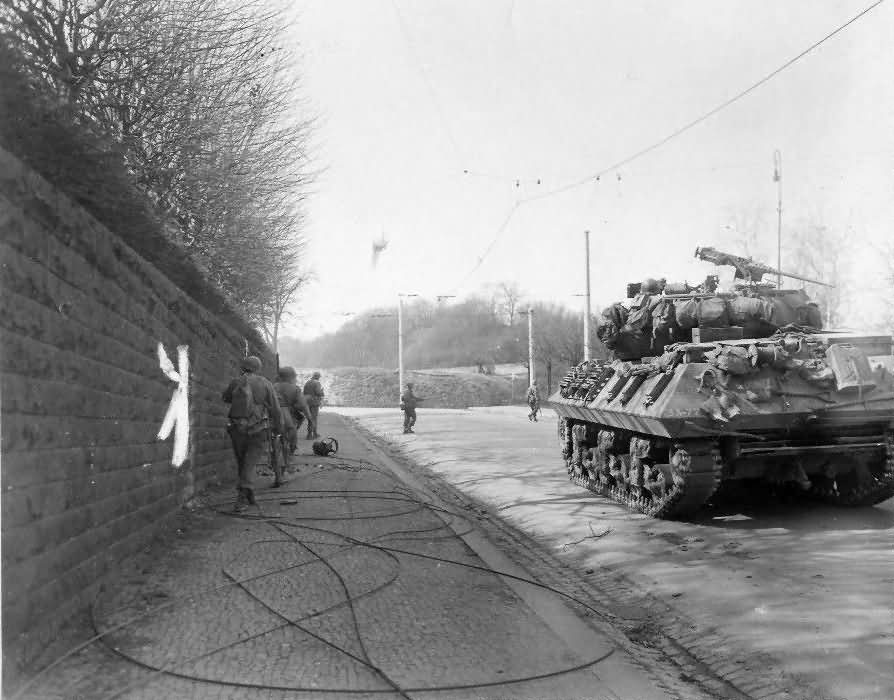


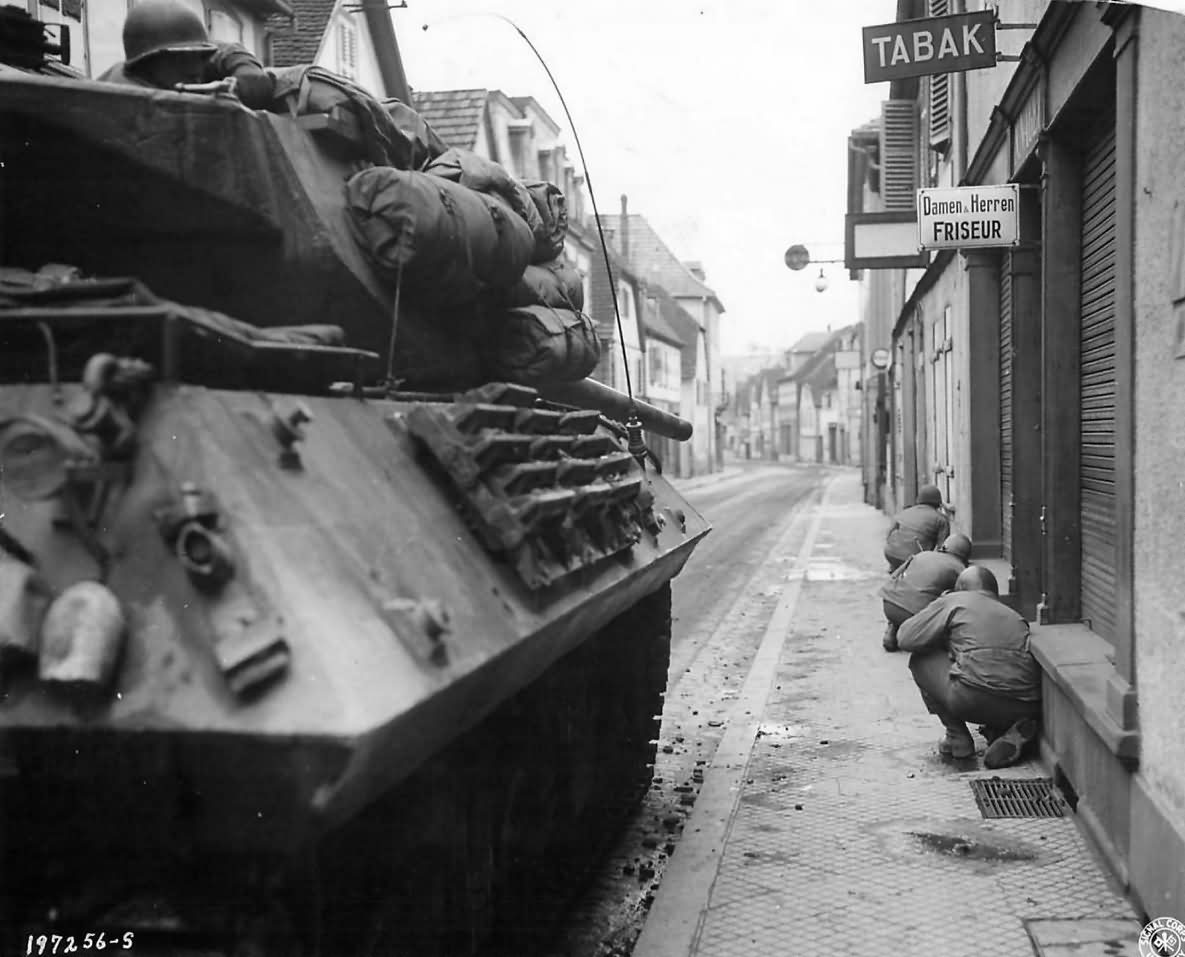
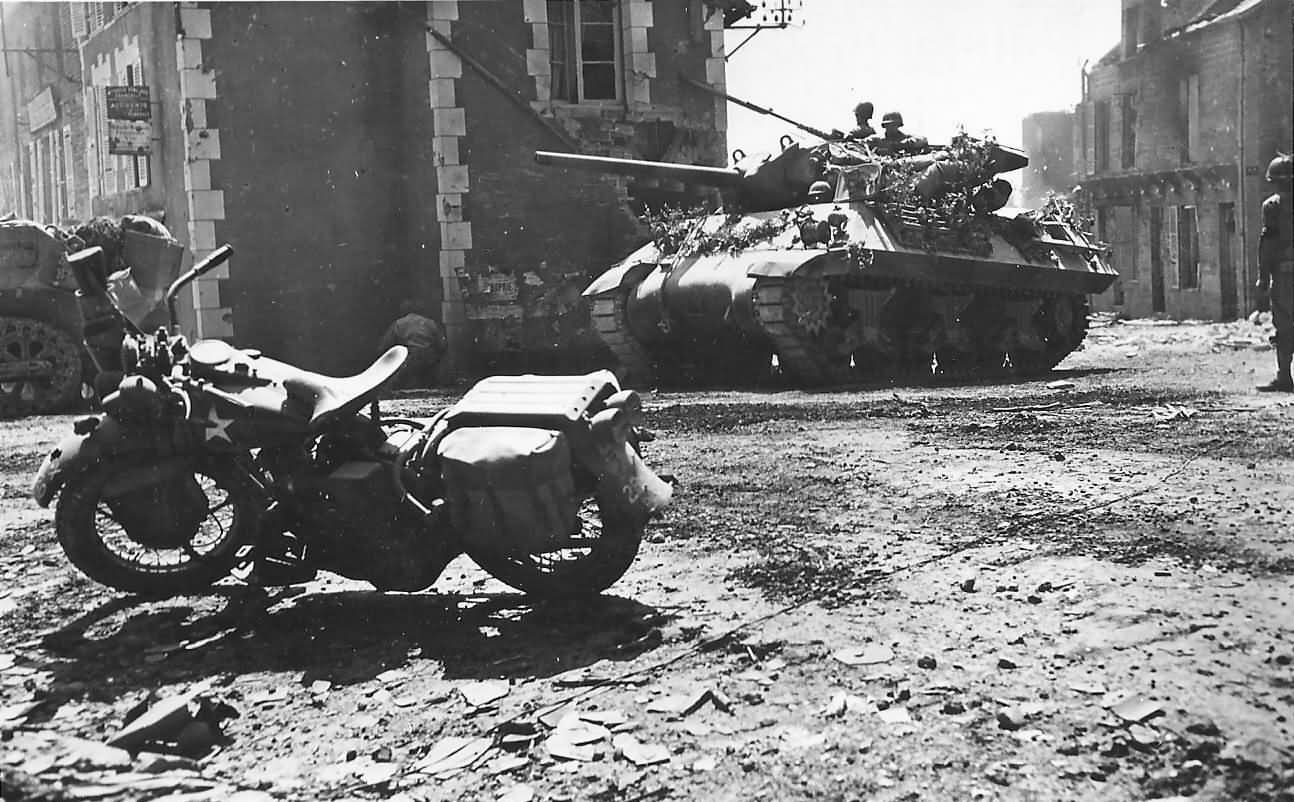

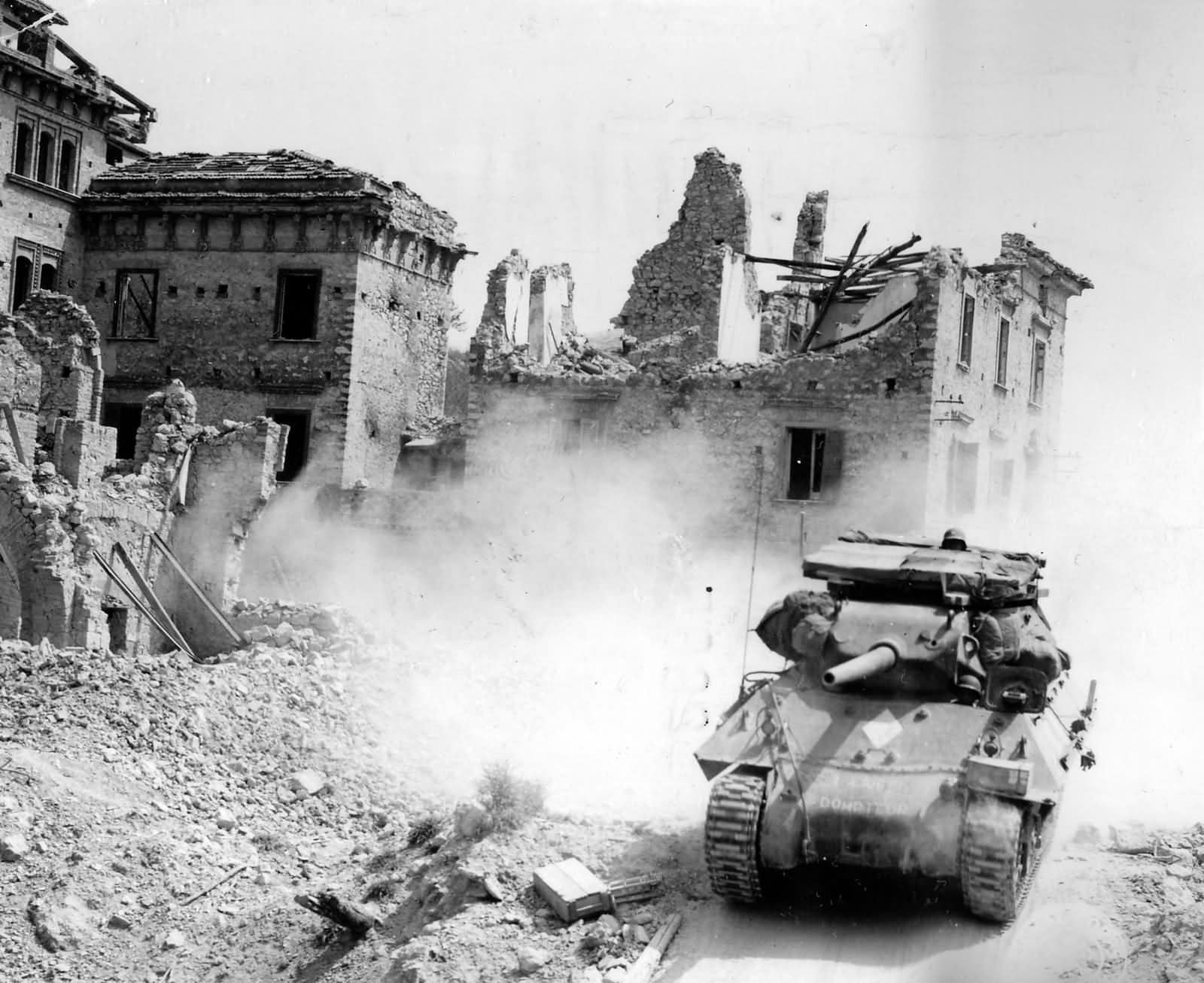
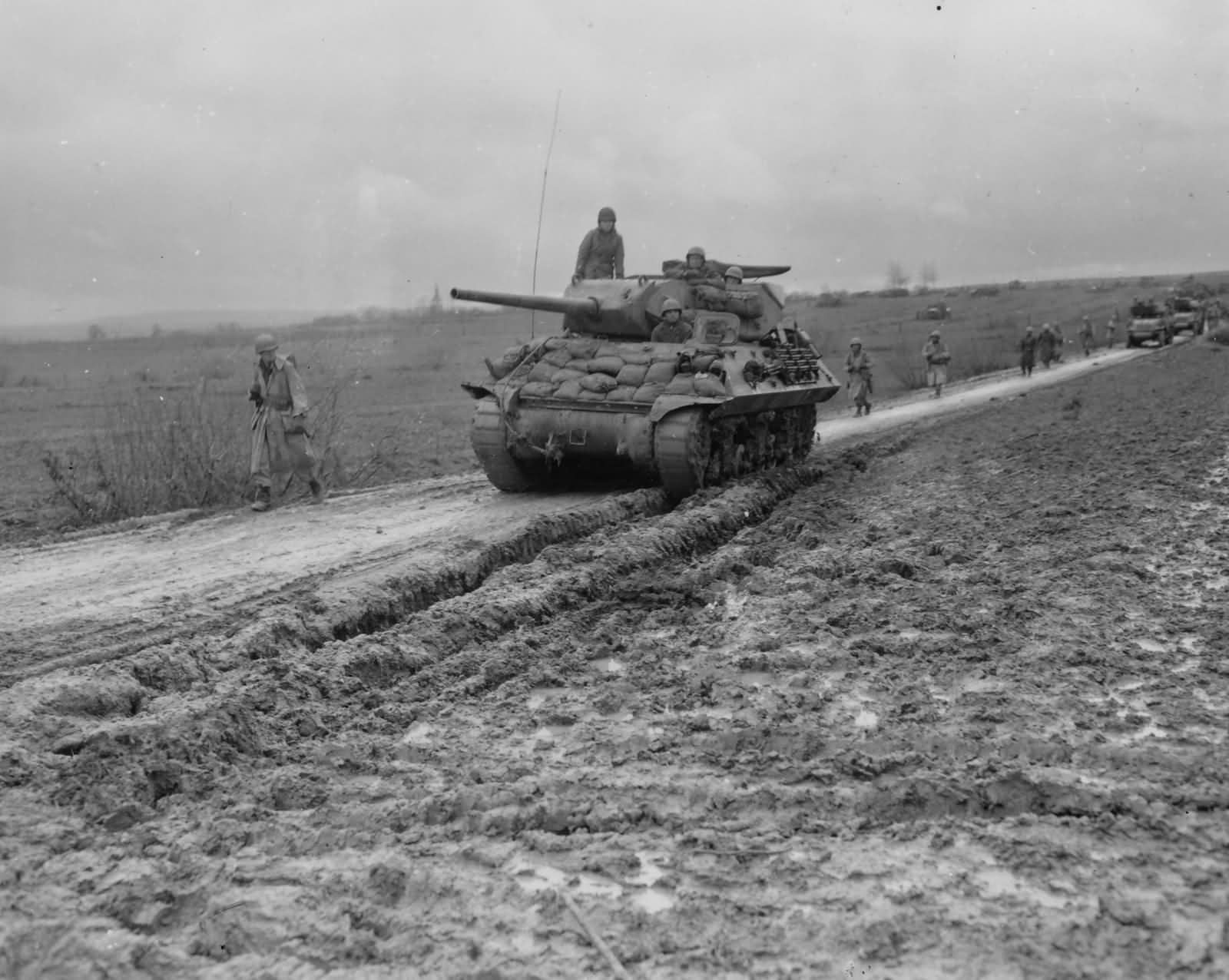
 A late production M10 with duckbill counterweights and wading trunks engages targets in France. It is supporting some doughs, the black marking on the left rear hull is scratch made by a wartime censor to keep the units identity secret.
A late production M10 with duckbill counterweights and wading trunks engages targets in France. It is supporting some doughs, the black marking on the left rear hull is scratch made by a wartime censor to keep the units identity secret.
